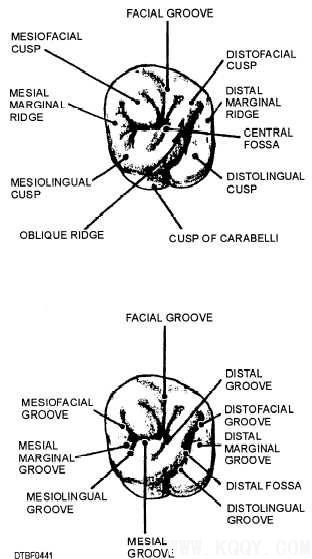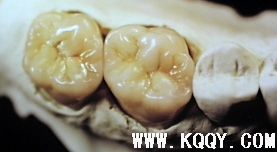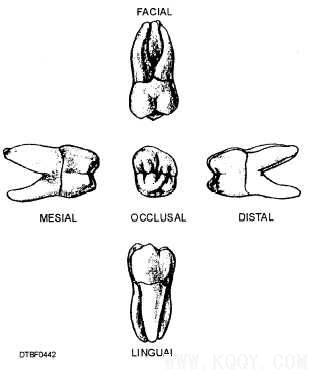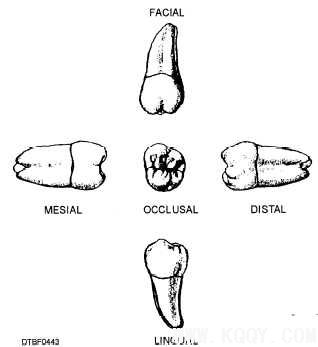Maxillary molar
MAXILLARY SECOND MOLARThe maxillary second molar (tooth #2 or #15 illustrated in figure 4-42, is the seventh tooth from the midline. The second molars are often called 12-year molars because they erupt when a child is about 12 years old.Because it has the same function as the maxillary first molar, its physical characteristics are basically the same. The second molar is smaller, the occasional fifth cusp of Carabelli does not appear, and there is a marked reduction in the size of the distolingual cuspMAXILLARY THIRD MOLARThe maxillary third molar (tooth #1 or #16),illustrated in figure 4-43, is the eighth tooth from themidline. Third molars are often called wisdom teeth because they erupt when the young adult is passing intomanhood or womanhood. The tooth is much smallerthan the maxillary first or second molars, with an occlusal outline that is nearly circular. 
Figure 4-41.—Features of occlusal surfaces of maxillary first molar.


Figure 4-42.—Surfaces of .

Figure 4-43.—Surfaces of maxillary third molar.
- on 01.11.2012 [endodontics]
- on 01.11.2012 [endodontics]
- on 01.11.2012 [endodontics]
- on 10.13.2011 [endodontics]
- on 12.15.2010 [endodontics]
- on 08.11.2010 [endodontics]
- Long Island College Hospital - [education]
- Faculty of Dental Medicine - H [education]
- The American Association of Or [organize]
- Summer Institute in Clinical D [organize]
- Academy of Osseointegration [organize]
- University of North Carolina a [education]
- American Orthodontic Society [article]
- American Equilibration Society [article]
- Niigata University - Japan [education]
- University of Buffalo [education]